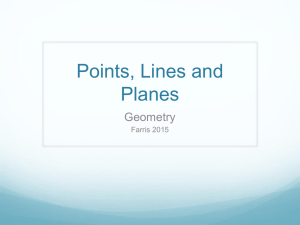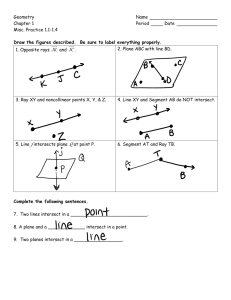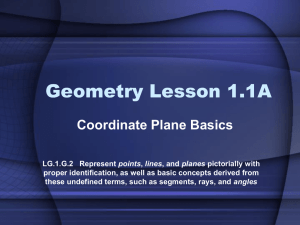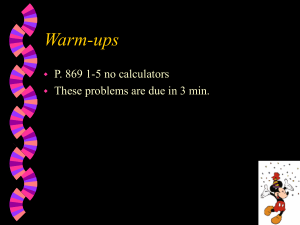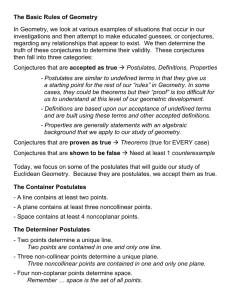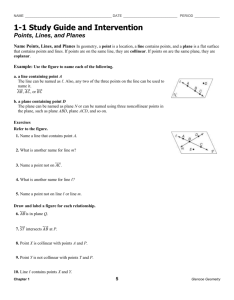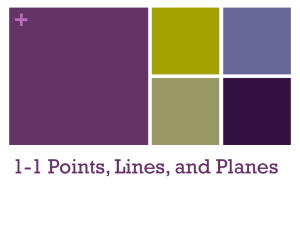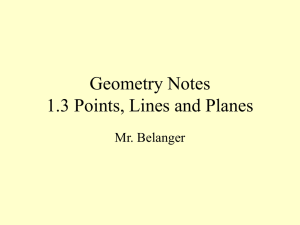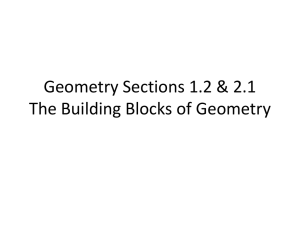1-1 Understanding Points, Lines, and
advertisement
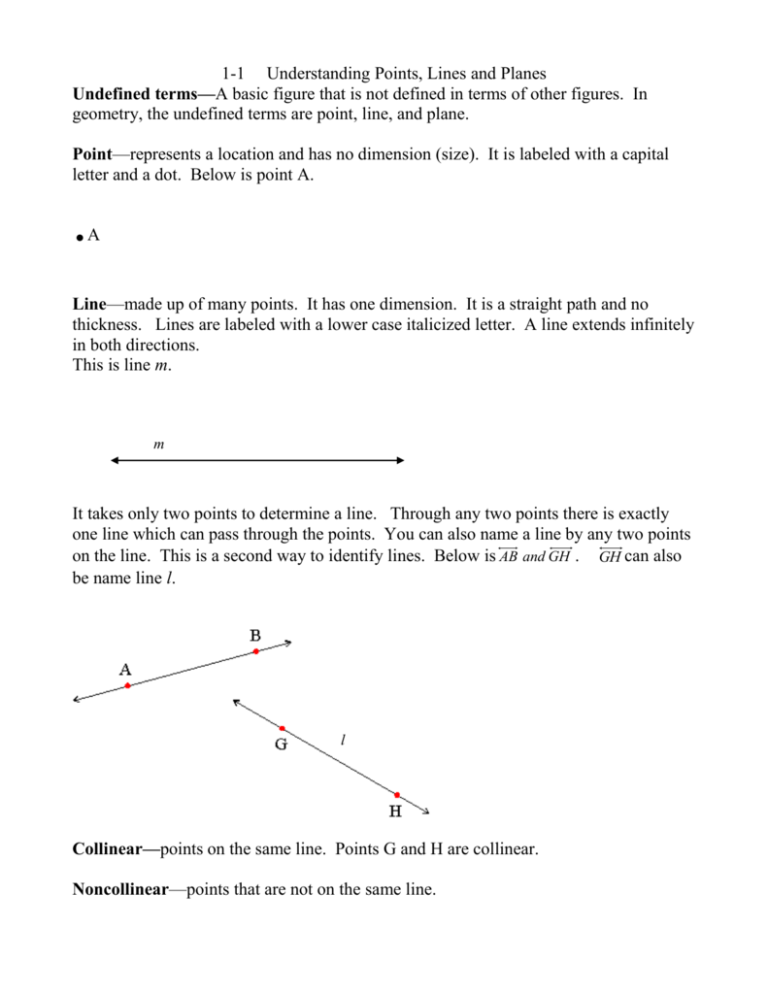
1-1 Understanding Points, Lines and Planes Undefined terms—A basic figure that is not defined in terms of other figures. In geometry, the undefined terms are point, line, and plane. Point—represents a location and has no dimension (size). It is labeled with a capital letter and a dot. Below is point A. . A Line—made up of many points. It has one dimension. It is a straight path and no thickness. Lines are labeled with a lower case italicized letter. A line extends infinitely in both directions. This is line m. m It takes only two points to determine a line. Through any two points there is exactly one line which can pass through the points. You can also name a line by any two points on the line. This is a second way to identify lines. Below is AB and GH . GH can also be name line l. l Collinear—points on the same line. Points G and H are collinear. Noncollinear—points that are not on the same line. Plane— A flat surface which contains many points and lines. A plane extends infinitely in all four directions. It is two-dimensional. Three noncollinear points determine a plane, as there is exactly one plane which can go through these points. A plane is named by a single, italicized, capital letter, or by three points on the plane in any order. The above plane is plane ABC or plane M, Coplanar—points and lines which lie on the same plane. In the above figure, points A, B, and C are coplanar Noncoplanar—not on the same plane. In the picture below, points A, B, D are noncoplanar .D Segment, or line segment—a part of a line with two endpoints and all points between the two endpoints. You name a line segment by its endpoints. This would be labeled AB or BA Endpoint—a point at one end of a segment or the starting point of a ray. Point A and point B are endpoints. They are labeled with capital letters. Ray—part of a line with one endpoint. The ray extends forever in one direction from the one endpoint. You always name a ray starting with the endpoint. The arrowhead above the points shows the direction the ray extends. The following ray can be named two different ways. P is the endpoint of the ray, so it comes first when naming the ray. The following ray can be named PQ or PR Opposite Rays are two rays that have a common endpoint and form a line. QP and QR are opposite rays. Postulate—(or axiom)—a statement that is accepted as true without proof. Postulates about points, lines, and planes help to describe other geometric properties. Postulates on Points, lines and planes 1. Through any two points there is exactly one line. 2. Through any three noncollinear points there is exactly one plane which contains all three of these points. 3. If two points lie in a plane, then the line containing those points lies in the plane. Intersect—if two different figures share at least one point. Intersection—the shared points when two figures intersect. Postulates: Intersection of lines and planes 4. If two lines intersect, then they intersect in exactly one point. 5. If two planes intersect, then they intersect in exactly one line. We use a dashed line to show the hidden parts of any figure that we are drawing. A dashed line will indicate the part of the figure that we cannot see. True or false If two lines intersect, then they are coplanar. true For any line, there are many planes that contain the line. true It is possible for three points to be noncoplanar false It is possible for four points to be noncoplanar. true
